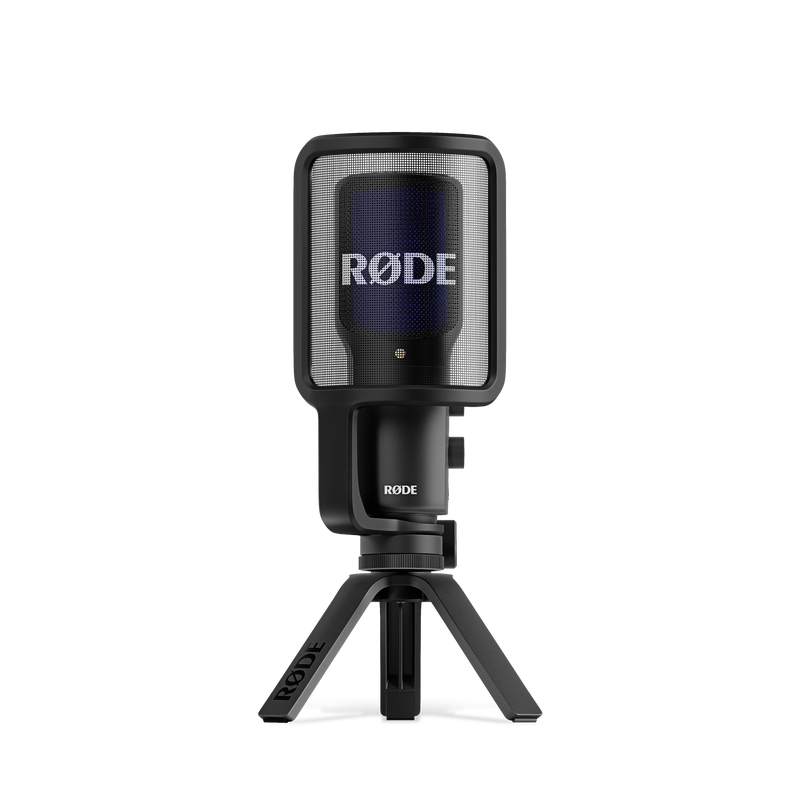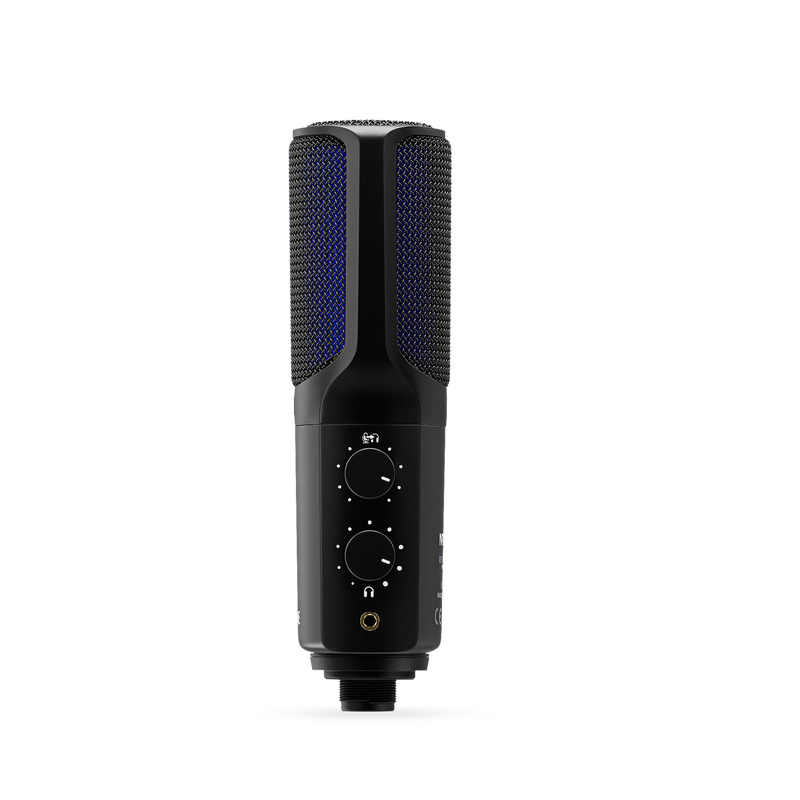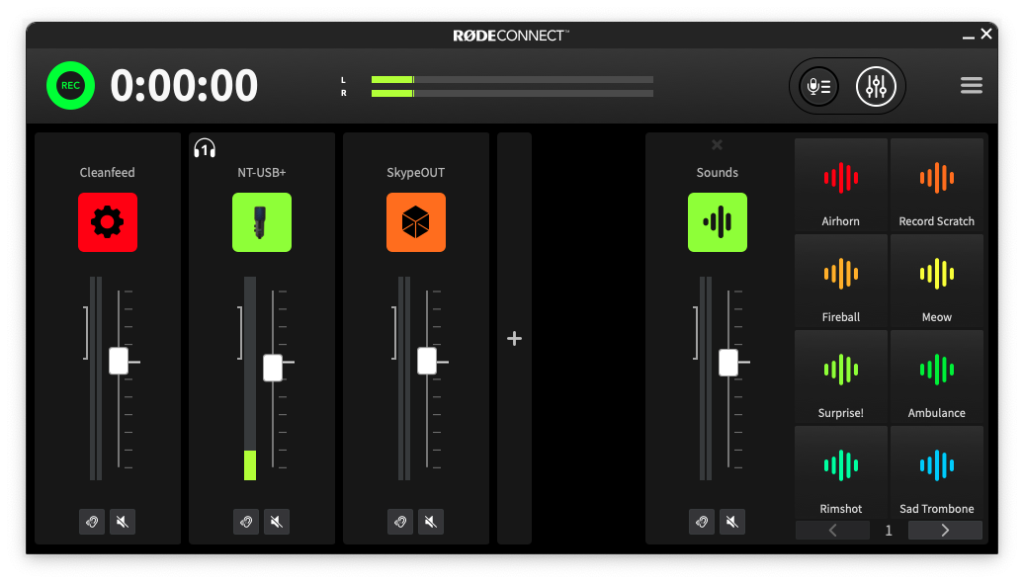Review: RØDE NT-USB+ condenser studio microphone with DSP & compelling app support
Description
This is my review of the NT-USB+ (U$169), a condenser studio microphone. Based on the original NT-USB (which I reviewed back in 2014), the NT-USB+ is a professional-grade USB microphone loaded with features, thanks to its newer preamp and DSP (digital signal processor) which allows APHEX effects, including a compressor, high-pass (low-cut) filter, noise gate, aural exciter, and Big Bottom. Activating them live (or live-to-drive) requires one of many compatible RØDE apps, including RØDE Central (macOS & Windows), RØDE Connect (macOS & Windows) or RØDE X UNIFY (macOS & Windows). In addition, RØDE Reporter (Android & iOS) allow recording control on mobile devices and tablets. DSP effects settings are fortunately saved inside the microphone. The test recordings I made for this review include the raw mic and every combination of the DSP effects. I’ll also explain why, considering that it works with the free Connect software and UNIFY software, the NT-USB+ is an amazing value proposition, since those programs are almost like a free RØDECaster mixer/recorder, while occupying a fraction of the space.
<figure class="wp-block-image">
 </figure>
</figure>In this article
- Key features of the NT-USB+
- A condenser microphone in an untreated room (part 1)?
- Advantages of being one of the few mics that work with RØDE Connect and RØDE Unify
- Test recordings, raw
- Test recordings, after one-click processing with Descript Studio Sound
- My opinion about each DSP effect
- Why I prefer using the optional WS2 instead of the included pop filter
- Why I prefer an optional flexible boom (or other stand)
- Can you handhold an NT-USB+ while recording?
- A condenser microphone in an untreated room (part 2)?
- Precautions regarding the USB connection
- Ratings
- Conclusions
 Potentiometers on the side of the NT-USB+ adjust volume to the connected headphones or earbuds and a mix ratio of the mic versus sound from the host device.
Potentiometers on the side of the NT-USB+ adjust volume to the connected headphones or earbuds and a mix ratio of the mic versus sound from the host device.
Key features of the NT-USB+
- Studio-grade condenser capsule and cardioid polar pattern, delivering pristine audio ideal for recording vocals (singing), speech and instruments
- Ultra-low-noise, high-gain Revolution Preamp and high-resolution 24-bit/48kHz (See 48kHzAlliance.com) analog-to-digital conversion
- High-power headphone output for zero-latency monitoring (even my ears, which are extremely sensitive to latency), complete with level and mix controls
- USB-C output for plug-and-play connectivity with computers, smartphones and tablets
- Internal DSP for advanced audio processing powered by APHEX – including optionally using a compressor, noise gate, aural exciter and Big Bottom effects
- Includes high-quality pop filter and desktop mount – an all-in-one solution for recording professional sound at home or on the go. Also allows mounting on a boom (which I greatly prefer and did) and with the optional WS2 windscreen instead of the included pop filter.
- Designed and made in RØDE’s state-of-the-art facilities in Sydney, Australia
A condenser microphone in an untreated room (part 1)?
Traditional logic says that we should always choose and use a dynamic microphone in an untreated room, since the lower sensitivity of dynamic microphones means that we will hear more of the person speaking and less of the room sound (including noise and reverb), assuming both types of microphones are very close to the mouth of the person speaking.
Having said that, some people prefer the sound of a condenser microphone even for the human voice, since generally speaking, condenser microphones have a wider frequency range and can provide more intelligibility with higher frequencies. Simple and fairly inexpensive technology is now leveling the playing field between dynamic microphones and condenser microphones, as I wrote in my recent article Descript’s «Studio Sound» makes dynamic mics sound like condensers & condensers behave like dynamics. Despite its one click ease of use, I clarified in the article that Descript’s «Studio Sound» is currently a post-process, not for live broadcasting. The other type of technology that is leveling the playing field are the DSP effects now built into microphones, including the NT-USB+ we are reviewing here. Potentially, the built-in DSP effects like the high pass filter and noise gate might make the NT-USB+ behave more like a dynamic microphone, just as my upcoming review of the RØDE PodMic USB (review pending) might do the opposite: the Aural Exciter and Big Bottom make it more act like a condenser. For the USB-NT+, we’ll confirm that ahead in this review.
Advantages of being one of the few mics that work with RØDE Connect and RØDE Unify
<figure class="wp-block-image size-large">
<figure class="wp-caption aligncenter" id="attachment_273265" style="width: 1024px;">
 <figcaption class="wp-caption-text" id="caption-attachment-273265">Above, RØDE Connect on macOS.</figcaption></figure>
<figcaption class="wp-caption-text" id="caption-attachment-273265">Above, RØDE Connect on macOS.</figcaption></figure></figure>
The free programs RØDE Connect and RØDE UNIFY for macOS and Windows indeed are almost like having a free RØDECaster mixer/recorder in software. (Sometimes they are even better, but that goes beyond the scope of this article.) They can record audio, multitrack or stereo. They can play back sound effects or soundbites to get a reaction from an interviewee, local or remote. They can control the level and other DSP options available in the NT-USB+ and a few other microphones from RØDE.
Another extremely valuable feature included in those two programs is the fact that they offer multiple, bulletproof/foolproof mix-minus with compatible local microphones (the ones that include a 3.5 mm headphone jack) plus up to two simultaneous remote communication services simultaneously, be they Cleanfeed (covered in many other articles), SquadCast (now included with Descript) or even (yikes) Skype and Zoom.us. Even though the last two examples (Skype and Zoom.us) are not the first choice for audio or video quality for a professional program (as the prior services indeed are), they are great when it’s the only we to reach a particular individual or organization, i.e. SkypeOut (now called Calls to mobiles and landlines) to call an individual who doesn’t own a computer or a company or embassy… or for very special cases with Zoom.us as covered here. The possibilities with these two programs (Connect and UNIFY) and those patched services are nearly endless.
Indeed, the power and compatibility with RØDE Connect and RØDE UNIFY cannot be emphasized enough. In my opinion, if any of those applications sound interesting to you, then you should probably narrow down your shortlist of microphone candidates to those which are compatible with RØDE Connect and/or RØDE Unify, or some other microphone together with the AI-Micro, the only interface currently compatible with Connect and UNIFY as of publication date of this article.
Test recordings, raw
The following recording goes from no DSP effect to each one:
<figure class="wp-block-audio"></figure>
The above recording is uncompressed WAV, 48 kHz. Especially if you listen with headphones, you will indeed hear some of the ro





